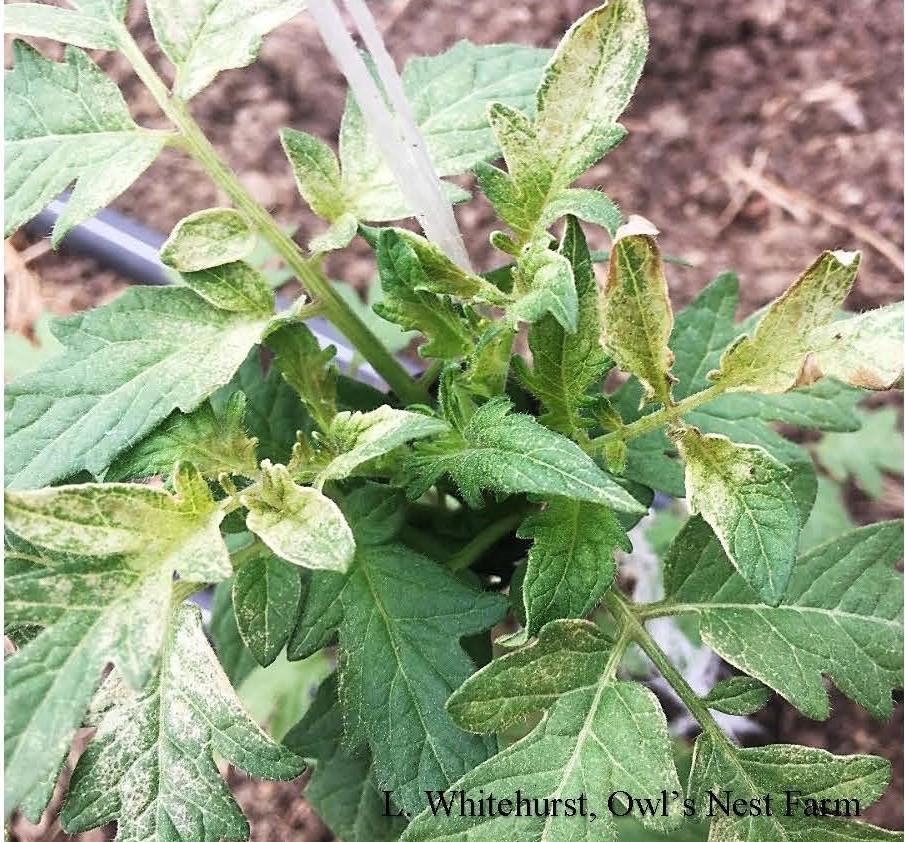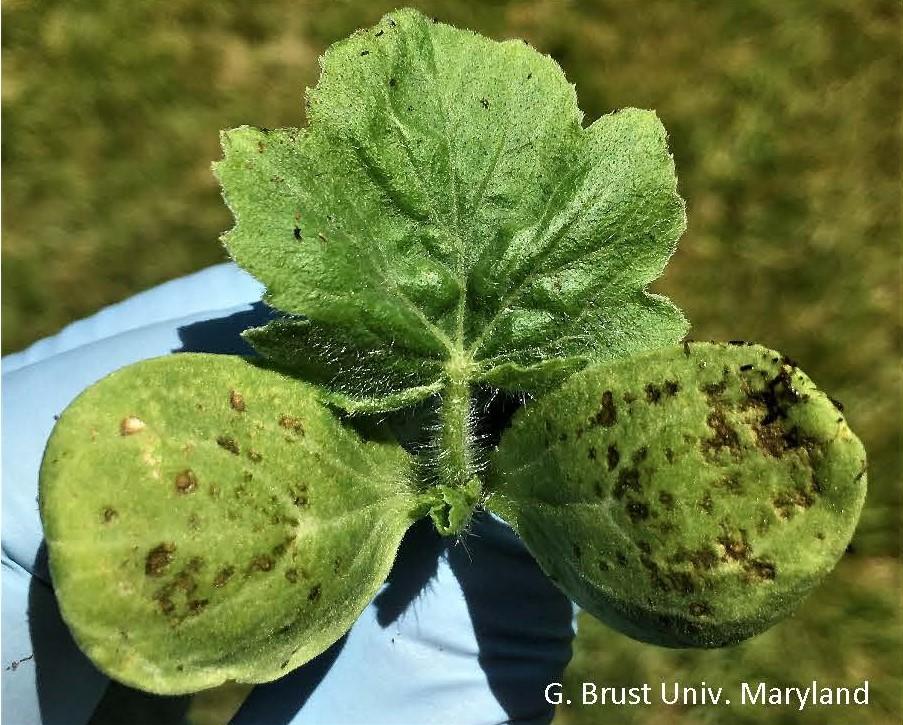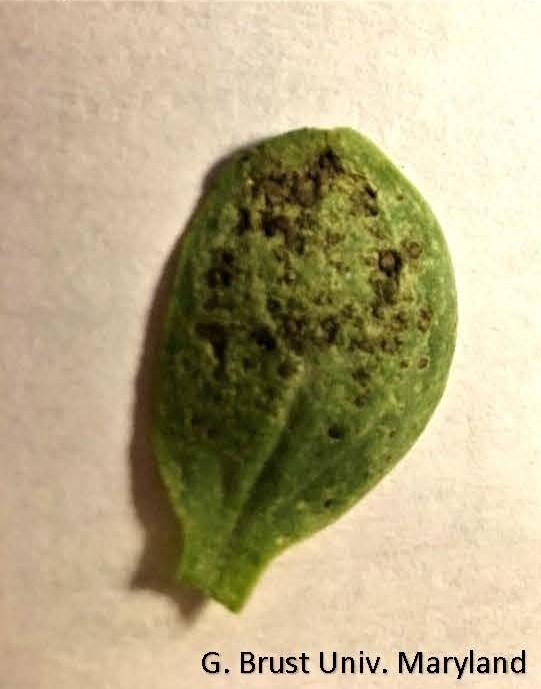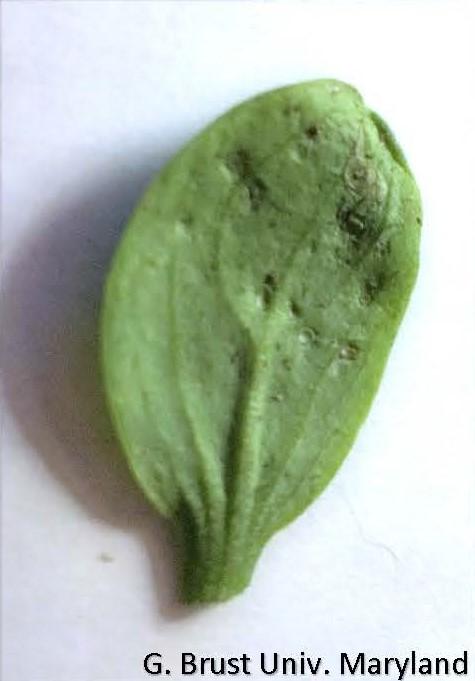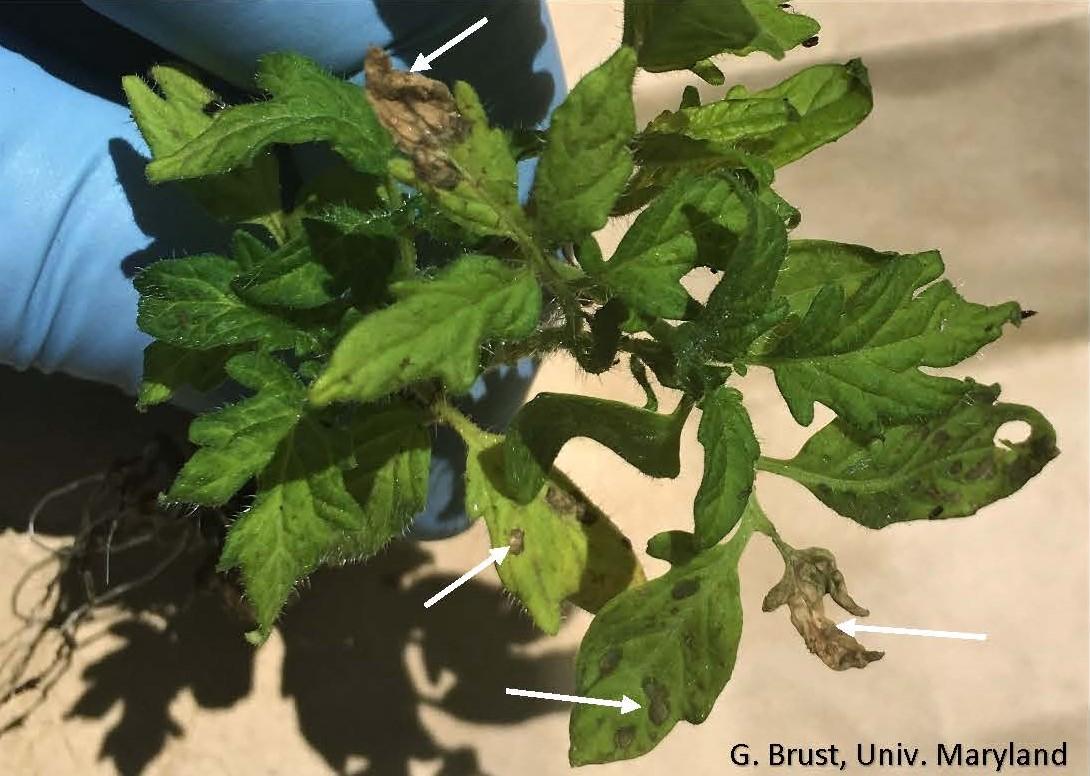Cold Damage to High Tunnel and Greenhouse Vegetables
Last week Gordon Johnson had an article talking about cold damage to peas and there also has been some cold damage and weather induced damage to vegetables in high tunnels and greenhouses. The first was some cold damage to tomatoes going out into a high tunnel. The leaves looked scraped of chlorophyll as the cells in the top leaves of the plant were damaged (fig. 1). This particular cold damage looks similar to heavy mite or thrips feeding, but without either of the pests present. The grower Liz Whitehurst of Owl’s Nest Farm said that the damage probably occurred when they were hardening the tomatoes off before being transplanted to the high tunnel and temperatures dropped to freezing. These plants should recover and grow normally but will be a bit behind the others.
The second example is not so much a cold damage one, but more of a strange environment/weather one. Watermelon transplants, along with some other vegetables, were being grown in a greenhouse when the grower noticed dark pitted lesions on their plants (fig. 2). The marks look bad and alarmed the county agent and me as to what was going on. There were some indications that the damage was abiotic, (i.e., it was not caused by a disease or insect pest or any living organism). The first was that only the cotyledon leaves were damaged, all true leaves were clean. The cotyledon leaves tend to be more sensitive to any possible phytotoxic sprays that may be applied. The second was that the damage to the cotyledons was only top-sided. The top side of the leaf had the dark spots, but the underside of the same leaf just had some pitting caused by the damage on the top side of the leaf (figs. 3 and 4). When this condition is seen it is usually caused by some spray that was applied to the plants. The third indication was that tomato seedlings in the greenhouse also developed similar necrotic spotting as the watermelon around the same time (fig. 5). The grower had applied a spray treatment recently that they had applied for years without any problems, but the environmental conditions at the time of this recent application resulted in a phytotoxic response from the plants. Although we had these 3 indicators that it was very unlikely something such as fruit blotch or some other bacterial disease that was the cause of the problem we still went ahead and had them tested by Karen Rane, Director of the UMD Diagnostic clinic. No fruit blotch or any disease was found. But we all agreed we’d rather be safe than sorry.
